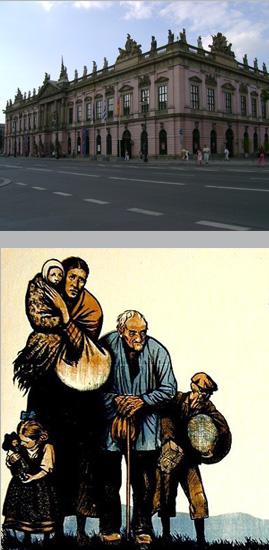Real Property and Business Claims in Germany
In 1989-1990 with the fall of the Berlin Wall, the former German Democratic Republic (GDR) was extinguished, and the two Germanys were reunified. Under the treaties establishing German reunification, the Federal Republic of Germany in 1990 and 1992 enacted the Law for the Settlement of Property Claims (Vermögensgesetz) and in 1994 enacted the Compensation for Persons Subjected to Nazi Persecution Act (NS-Verfolgtensentschädigungsgesezt).
Claims filed with the German government after the restitution filing deadline, December 31, 1992, have almost universally been rejected. Thousands of claimants, however, filed timely claims, and for the past twenty-five years, Osen LLC has been one of the leading law firms in the United States, representing individuals and corporations seeking restitution for properties and business assets confiscated by the Nazi regime or the former GDR. The Conference on Jewish Material Claims Against Germany (JCC) also established both a Goodwill Fund and a Late Applicant Fund for claimants who missed the initial statutory deadlines established under German law. Although the deadline to file claims with the JCC has also expired, Osen LLC has represented numerous claimants through this process as well.
Many of the cases that did proceed in Germany under its restitution laws required hard-nosed litigation in German courts, and skilled use of researchers, investigators and historical experts. The Firm has therefore worked extensively with leading German law firms to collaboratively resolve many complex cases involving both property and business claims. The Firm’s victory on behalf of the Wertheim family was hailed as one of the largest, most notable restitution settlements of the last 20 years on behalf of Holocaust victims and their heirs. Osen LLC, again working with counsel in Germany, has successfully argued cases in the German High Court and has favorably resolved numerous complex cases that were previously regarded as hopeless.
Looted Art & Cultural Assets
During World War II, the German and Russian armies looted art and cultural property across Europe. Even prior to the war, the Nazi regime oversaw the systematic transfer and sale of artwork and other collectibles sold by Germany's Jewish citizens under duress. In 1998, the Washington Conference on Holocaust Looted Assets confirmed the commitment of many of the world's governments to achieve a just and fair solution for the heirs of pre-war owners of art that was confiscated by the Nazis and not subsequently restituted. This commitment is embodied in a document commonly known as the “Washington Principles.” In 2009, this was followed up by the Terezin Declaration in which 47 nations further affirmed their commitment to create and maintain a central registry for looted art and to find a “just and fair” solution to claims for return of property seized during the Nazi period. In practice, however, recovering looted art, even from state-owned museums, is extremely difficult, in part because many governments and museums pay lip service to art restitution while opposing their actual return to the heirs of Nazism’s victims.
Osen LLC has spent more than two decades helping former owners of looted art and cultural property in their pursuit of justice. The Firm has successfully resolved many of their claims, recovering many stolen works of art and cultural artifacts. One much-publicized case involved the efforts of the son of Hans Sachs to recover one of the most famous and prestigious poster collections ever assembled, which the Gestapo had confiscated in 1938. That case established ground-breaking precedent in Germany’s highest court.


